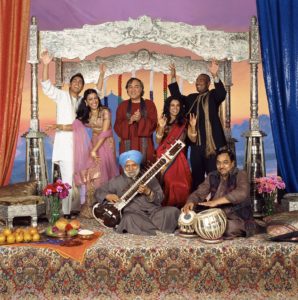
Religion and culture are closely tied together, often developing simultaneously and giving birth to important customs and traditions. Humans use both music and dance to tell stories, commemorate important events, and allow individuals and groups to express their thoughts and feelings. Bhangra is a uniquely Punjabi cultural phenomenon that’s moved beyond its original religious and historical celebratory context, developing all over the world in exciting and innovative ways.
A Punjabi Art Form To Celebrate the Harvest
Nicknamed “the breadbasket of India,” the Punjabi region of northwest India and eastern Pakistan encompass large swaths of farmland on which rice, sugarcane, and wheat are grown. Punjabi history and culture are shaped by agriculture and religious influences from Islam, Hinduism, and Sikhism. BBC Religions reveals that the Vaisakhi harvest festival is a major holiday in the region, but it holds a dual significance for Sikhs since it marks the establishment of the Sikh community in 1699 C.E. by Guru Gobind Singh. Every April 14th, Sikh Punjabis observe Vaisakhi by visiting Sikh temples and singing religious hymns. Meanwhile, community festivities include music, dancing, plenty of food, and parades through the streets.
Traditional music and folk dancing are closely linked to celebrations of this springtime holiday. The dance itself is a high-spirited style that involves bouncing, hopping, and stepping, along with some leaping and kicking moves. At the same time, the word “bhangra” can also refer to the music that accompanies the dancing. Listeners will hear distinctive syncopated rhythm styles played on a large double-headed Indian drum called a “dhol.” Lyrics in the original genre usually focus on harvest and history or urge bystanders to dance.
Bhangra Music and Dance Migrate Westward
As Punjabi people began moving to the United Kingdom in the middle of the 20th century, they brought bhangra music and dancing with them. After this migration, Punjabi youth began experimenting and creating new music styles by first incorporating flutes, zithers, fiddles, and harmoniums and then later adding Western instruments such as guitars, synthesizers, and horns. At the forefront of the first wave of experimentation was Alaap, a band formed in London’s Southall district in 1977 by musicians Channi Singh and Harjeet Gandhi.
Once bhangra came to other English-speaking nations, the genre saw further creation and innovation. Musicians began blending the traditional music with hip-hop and R&B and introducing new techniques such as sampling. American artists such as Missy Elliot, Jay-Z, and Selena Gomez have also been inspired by the genre, creating their own music with bhangra-influenced sounds. Popular artists include past and present notables:
- Panjabi MC, a British artist fusing bhangra and hip-hop
- Daler Mendhi, an Indian singer and songwriter
- Ms Scandalous, a bhangra rap artist from Southall
- Miss Pooja, a bhangra singer from Punjab
Furthermore, a January 2018 AM New York piece explains that a highly competitive worldwide bhangra dance circuit has developed in the last few decades, with dance troupes performing and jockeying for a wide range of prestigious awards. Bhangra Empire, a San Francisco dance team, became famous when they appeared on “America’s Got Talent” and performed for a state dinner hosted by President Barack Obama and First Lady Michelle Obama. The AM New York article also profiled Bhangra Theory, a newly established New York area troupe seeking to enter the high-energy world of competitive bhangra.
From Religion and History to Popular Culture
Music and dance are both a vital part of the human experience and key components of many civilizations. They’re also malleable forms that can shift and change when their listeners and creators encounter and are influenced by new cultures. The transformation of bhangra in the Indian diaspora proves this point abundantly, transforming from its folk and religious origins into an art form that’s popular throughout the world.

